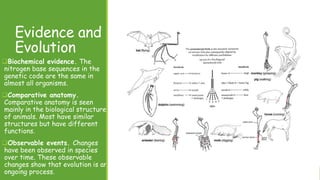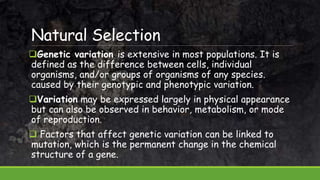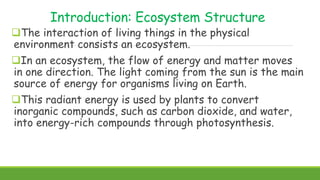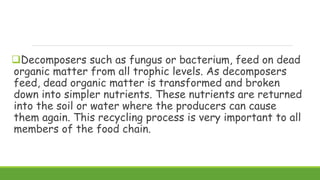The document covers the concepts of biodiversity and evolution, detailing the contributions of Charles Darwin and the evidence supporting evolution, including fossil records, biochemical evidence, comparative anatomy, and observable changes. It explains natural selection as a mechanism of evolution, the process of speciation, and the role of ecosystems in connecting living organisms, along with how human actions impact these systems. Additionally, it defines key terms and concepts related to ecosystems and the relationships between different life forms.





























